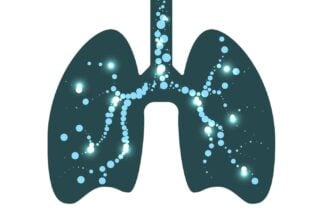
An early mesothelioma diagnosis is crucial to improving prognosis and ensuring patients have more treatment options available. Unfortunately, detecting the cancer early is extremely difficult, and current diagnostic tests, like imaging scans, often aren’t as reliable when the disease is still in its early stages. Diagnostic tests can also be hindered by a lack of symptoms altogether or nonspecific symptoms that can easily be mistaken for other common ailments.
A biopsy is typically required to make a definitive mesothelioma diagnosis and usually comes as the last step following numerous other diagnostic tests, like imaging scans. In the case of pleural mesothelioma, fluid accumulation in the lung cavity, known as pleural effusion, is one of the most common symptoms as the disease starts to become more advanced. Doctors will often take a sample of the pleural fluid or the nearby tissue to help make an accurate diagnosis.
Researchers have seen, however, that pleural effusions may not always be easily noticed during imaging scans in the earlier stages of diagnosis. Though CT scans are considered more sensitive and can detect nodules or growths on the lung as small as 2mm, researchers note the test often fails to pick up abnormalities in the pleural lining itself until diseases like mesothelioma have become more advanced.
In a recent study, researchers found that a small amount of excess air in the pleural cavity enabled a clearer identification of pleural abnormalities, like small tumors, that weren’t previously detected in CT scans of early stage patients. They theorized that the air creates a better distinction of densities between the different membranes lining the lung, allowing the imaging test to get a clearer view of what may be happening in the thin membranes.
The researchers examined six case reports of mesothelioma that had previously undetected nodules in the pleura. Air in the pleural space during imaging scanning allowed nodules (growth of abnormal tissue) or tumors and pleural effusion to become more apparent, leading to an earlier biopsy and subsequent diagnosis.
In one of these cases, a 61-year-old man developed pleural effusion, though doctors couldn’t determine the specific cause. Before draining the excess fluid, imaging tests didn’t reveal any other abnormalities in his lungs or chest wall. However, after the draining allowed some air into the intrapleural space, another CT scan revealed significant abnormal growths in the lung that weren’t previously visible. The new scan prompted doctors to conduct further biopsies and cytological testing to examine the cells in the pleural effusion, which later led to a mesothelioma diagnosis. Without the additional insight provided by the insertion of air, diagnosis could have been delayed, limiting his treatment options and worsening life expectancy.
The researchers note that pleural thickening or nodules are common in mesothelioma and other pleural diseases, whether malignant or inflammatory. By inserting a small amount of air into the pleural space, researchers can create a clear distinction between the chest wall, lung, and the lung linings that will enhance any existing abnormalities in imaging testing, thus aiding an earlier diagnosis.




